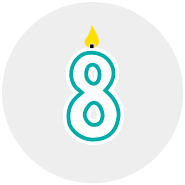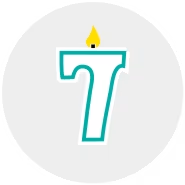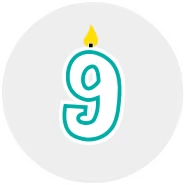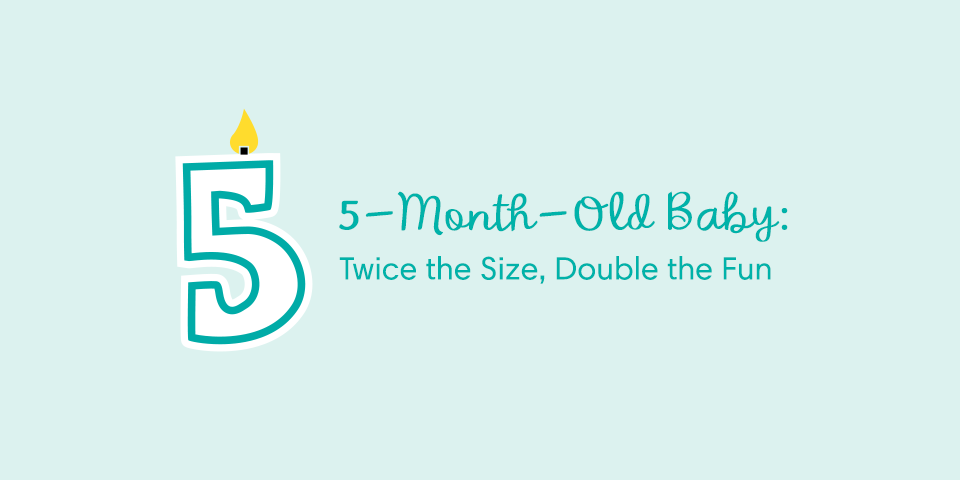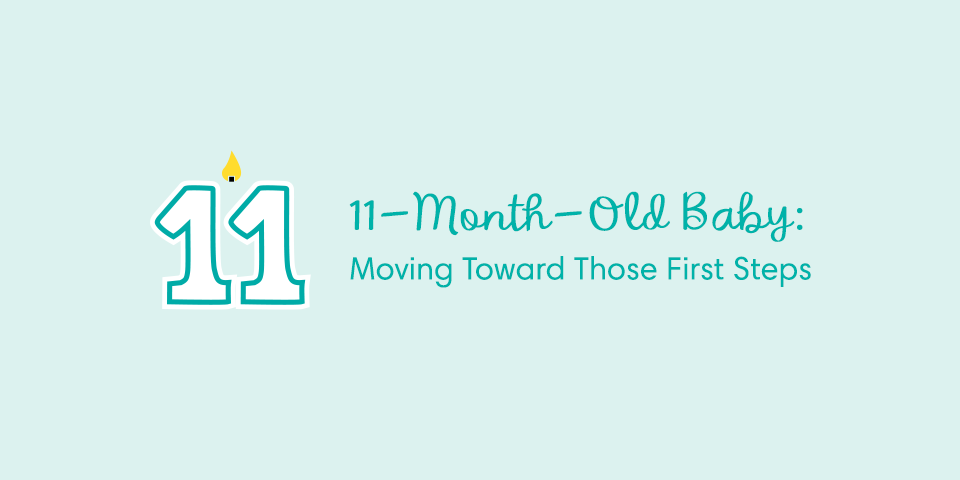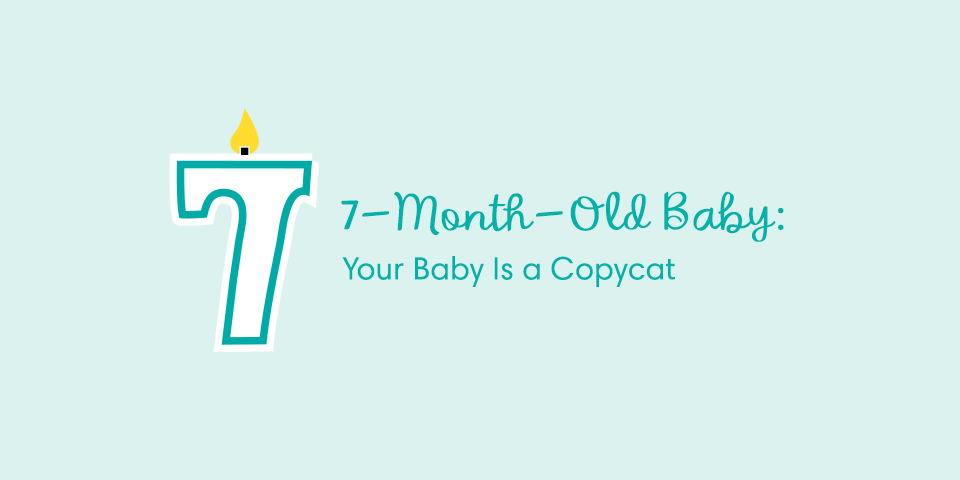Your 8-Month-Old Baby's Development and Milestones
Now that your baby has turned 8 months old, they’re more curious and active than ever before. Their muscles are getting stronger, their balance and coordination are improving, and they’re getting ready for crawling, cruising, and eventually walking. Here’s what you need to know about sleeping, feeding, health concerns, and more so you’ll be prepared during this exciting time of growth and development.
Baby Development Milestones
You’re about to see some big changes in your little one at 8 months old! If they haven’t started crawling already, they’re likely preparing to crawl and will be on the move before you know it. They may also be about to experience some changes in their sleep habits and may develop food preferences as their menu expands, so read on to learn more about all the developmental milestones that are happening during this eighth month.
Growth and Physical Development: Putting Their Best Foot Forward
By this time, your baby has likely more than doubled their birth weight. The average 8-month-old baby boy’s weight falls somewhere between 17.5 and 22 pounds; girls usually weigh about a half a pound less at this age. Keep in mind, though, that it’s normal for babies’ growth to slow down in the months leading up to the first birthday. At each checkup, your baby’s healthcare provider has been weighing and measuring your baby and using baby growth charts to make sure your little one is progressing well. You may want to learn more about how to read and interpret baby growth charts.
Have you taken a good look at your baby’s feet lately? You may have noticed that their feet and toes may point inward when your little one is lying on their back; once they take a step or two, the feet may point outward. Not to worry, as those foot positions will correct themselves in due time. During the 12- to 18-month period, hip ligaments tighten, and your child's feet are able to point forward when walking; by 24 months, most children are no longer pigeon-toed. Right now the soles of your baby’s feet are protected by a layer of fat that makes their feet appear flat. This fatty layer will also disappear in two to three years, and arches will begin to form.
Senses: New Experiences and Reactions
Improved hand-eye coordination is one of many 8-month-old baby milestones your little one may reach right about now. At this point, your baby is probably able to spot a toy across the room, go after it, and pick it up. They love to experience different textures, whether in their hand or in the foods they eat. Their hearing and early language skills are also improving, so make sure to talk with them as much as possible and describe all the sights you’re both seeing throughout the day.
Movement: Preparing to Crawl
An exciting 8-month-old baby milestone you might observe is that they’re sitting up on their own without support. Watch as your baby starts to lean forward to reach for and pick up objects with one hand! Right now, they’re working on strengthening the muscles they need for crawling, which usually starts somewhere between 7 and 10 months. Now that your little one is more mobile than ever, it’s even more important to keep a close eye on them, especially when changing them or during play time.
One way to help your baby get ready to crawl is by giving them tummy time. During tummy time, they’re in the perfect position to start crawling, and they’re learning how to push up onto their hands and knees. They may start by rocking back and forth before they’re able to propel themselves forward. You can even encourage them further by holding a toy or other object just beyond their reach.
Cognitive Development: Playing With Words and Sounds
Your 8-month-old baby’s language and communication skills are continuing to develop, and you may find you understand each other a little better these days. In fact, what may have sounded like gurgles and babbles until recently can begin to sound like real syllables. Simple syllables like “ma” and “ba” start to form the basis for simple words, like mama and bye-bye. Your baby now understands more of your words, too! If you mention their favorite toy that’s across the room and they look in its direction, they’re understanding you. They’re likely starting to respond to their own name and the word “no,” too.
Your baby is also starting to understand object permanence, the concept that objects exist even when they’re out of sight. They’re becoming more curious and may start to search for items if you hide them. Playing games like peekaboo will be fun and will help your little one grasp this important concept.
Separation anxiety is not uncommon at this stage, and when your baby can't see you, they may become upset and cry. As your 8-month-old has little understanding of time, they can’t work out when or even if you’ll return. You may be able to help them through these periods of separation with a transitional object, like a security blanket or a special, always-by-their-side toy, which will help reassure and comfort them.
Tips and Activities for Supporting Your 8-Month-Old Baby’s Development
Wondering what “should” an 8-month-old be doing? Babies this age are curious, increasingly mobile, and eager to enjoy new experiences with you, so there are myriad ways to have fun together and to encourage their development. Here are a few things to do with an 8-month-old to support their progress:
Feeding Your 8-Month-Old Baby
Wondering about how much “should” an 8-month-old eat? Your baby’s daily menu can include mashed or pureed solids (aka baby food) and soft table foods, which should provide at least half of your 8-month-old baby’s caloric needs. The other half should come from breast milk or formula. In total, babies need about 750 to 900 calories per day.
Your baby’s feeding schedule may include three main meals a day with about two snacks in between meals.
Your little one is starting to develop food preferences as their sense of taste and smell improve, so now is a great time to offer new foods, flavors, and textures. Don’t worry if they don’t take to a new flavor right away. Your baby may need repeated exposure to a new food, as many as 10 to 15 attempts over a few months, before they’ll eat it.
Thinking about what to feed an 8-month-old?Looking for food ideas?Now is the time to introduce your baby to foods with slightly coarser textures like yogurt, oatmeal, and mashed bananas, which will also help them work on their chewing skills whether they have one, two, or no teeth.You may even like to offer your 8-month-old finger foods to give them practice with self-feeding.
Here’s an example of a daily food menu for your 8-month-old baby including both baby food and breast milk or formula. It also gives you an idea of approximately how much to give your 8-month-old.
How Much Sleep Does an 8-Month-Old Baby Need?
By now, your 8-month-old baby may be sleeping about 9 to 12 hours at night and napping twice a day. Naps can last anywhere between 30 minutes to 2 hours. This might sound like a lot of snoozing but be prepared for some disruptions in your baby’s nap and sleep schedule around this time.
For some little ones, the onset of separation anxiety at this stage can lead to sleep regression, meaning your 8-month-old baby may sleep less than they used to, or they may wake in the night after previously being able to sleep through the night. Here are some tips to help your little one sleep more soundly:
If your baby does cry for you in the middle of the night, try not to turn on the bedroom light, rock them, or walk with them. And you’ll also want to avoid feeding them and taking them into your bed. All of these will make self-soothing more difficult in the future, because they’ll learn to associate bedtime with these acts and come to expect them as part of the bedtime routine every single night.
To learn more about your baby’s sleep, download the Smart Sleep Coach app by Pampers. Cocreated by pediatricians and sleep experts, this app can help you track your baby’s daytime and nighttime sleep and help you create a sleep schedule that works for your 8-month-old baby.
A Day in the Life of Your 8-Month-Old Baby
Every baby is different, but here’s a glimpse of what a typical daily schedule could look like with your 8-month-old baby.
Your Baby’s Health
All that wriggling and moving your baby has been doing is preparing them for some big steps, and it’s important to make sure your home is as safe as it can be for your little explorer. You may have already started babyproofing your home (if not, now is a great time to do it); keep in mind that your baby furniture and equipment need just as much attention as your electrical outlets and cabinet doors.
Safe Equipment
Falls are among the most common household accidents, so you’ll want to check your baby’s crib, changing table, high chair, and other equipment to make sure they meet safety standards and are assembled correctly. Here are some other tips to make sure these items are as safe as can be:
Crib
Changing table
High chair
Playpen
Water Safety
Babies and small children can drown in only a few inches of water, so you’ll want to be especially careful in the bathroom, as well as outside if your home has a pool, pond, hot tub, or other small body of water.
Never leave your baby alone in the bath, or around any open containers of water (like buckets and watering cans) no matter how shallow. Also, keep toilets closed and use a lid lock to keep your baby out of the toilet bowl.
If you do have a swimming pool, install a four-sided fence with a self-locking gate around the entire area, and completely remove any pool covers before swimming. Make sure you have a safety ring and rope handy in case of emergency, as well as your phone. Many little ones love the water, and you can have tons of fun splashing around, but always give your baby your complete attention when you’re swimming and try to eliminate any distractions.
Items You Will Need This Month
Thinking of purchasing some much-needed baby gear this month? Here are some items that might come in handy:
FAQS AT A GLANCE
An average 8-month-old baby boy’s weight is probably between 17.5 and 22 pounds. Girls this age may weigh between 17 and 21.5 pounds.
Your Life as a Parent: Introducing a New Sitter and Handling Weaning
If you’re dealing with separation anxiety and you also happen to need a new sitter or caregiver at this time, you may need to take some additional steps to help prepare your little one for a new face. Here are a few tips for introducing your baby to a new caregiver:
If you’ve been breastfeeding, you may find that around the time when your baby is starting to sample different foods they may be less interested in breastfeeding. This is called natural weaning or infant-led weaning, and it’s perfectly fine to let your baby’s preferences take the lead. Continue to offer them new food options while still allowing them to breastfeed when they want.
Some mothers face pressure to wean their babies for a variety of reasons, including a lack of support and encouragement from family and friends, or even a lack of facilities for pumping and feeding at their workplaces. The decision to wean is an intensely personal one, but it’s still advised to breastfeed exclusively for the first six months of your baby’s life and continuing to nurse while providing other foods for at least the first year. Consult your baby’s healthcare provider or a lactation consultant for advice on weaning.
As long as you’re confident your baby is getting all the nutrients they need, there is no need to feel any pressure to wean if the time doesn’t feel right for you and your baby.
Checklist for This Month
How We Wrote This Article The information in this article is based on the expert advice found in trusted medical and government sources, such as the American Academy of Pediatrics and the American College of Obstetricians and Gynecologists. You can find a full list of sources used for this article below. The content on this page should not replace professional medical advice. Always consult medical professionals for full diagnosis and treatment.
- American Academy of Pediatrics, Caring for Your Baby and Young Child: Birth to Age 5, 7th ed. (New York: Bantam Books, 2019).
- healthychildren.org. “Infant Food and Feeding.”
- Kids Health. “Childproofing and Preventing Household Accidents.”
- Kids Health. “Communication and Your 8- to 12-Month-Old.”
- Kids Health. “Feeding Your 8- to 12-Month-Old.”
- Kids Health. “Movement, Coordination, and Your 8- to 12-Month-Old.”
- Kids Health. “Sleep and Your 8- to 12-Month-Old.”
- Kids Health. “Your Baby's Growth: 8 Months.”
- Kids Health. “Your Baby's Hearing, Vision, and Other Senses: 8 Months.”
- National Library of Medicine. “Weaning from the Breast.”
- World Health Organization. “Breastfeeding.”
